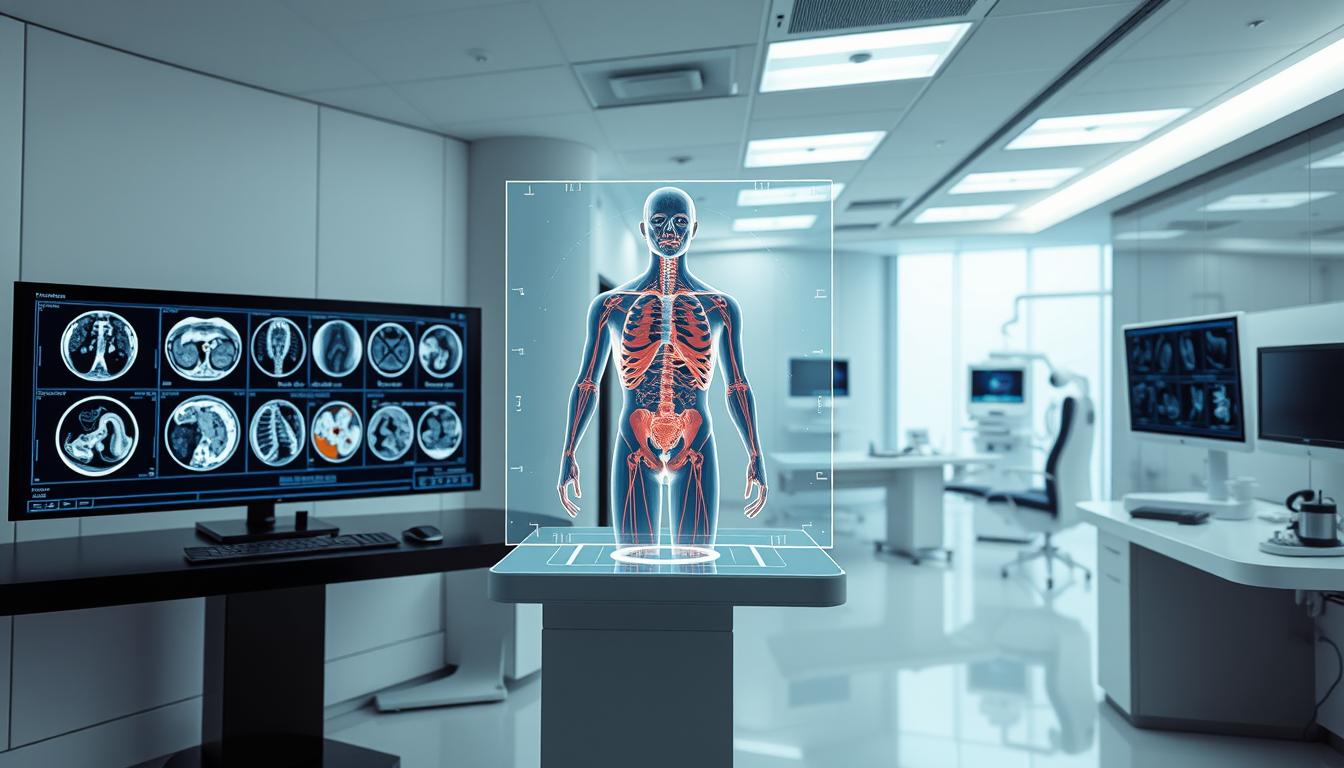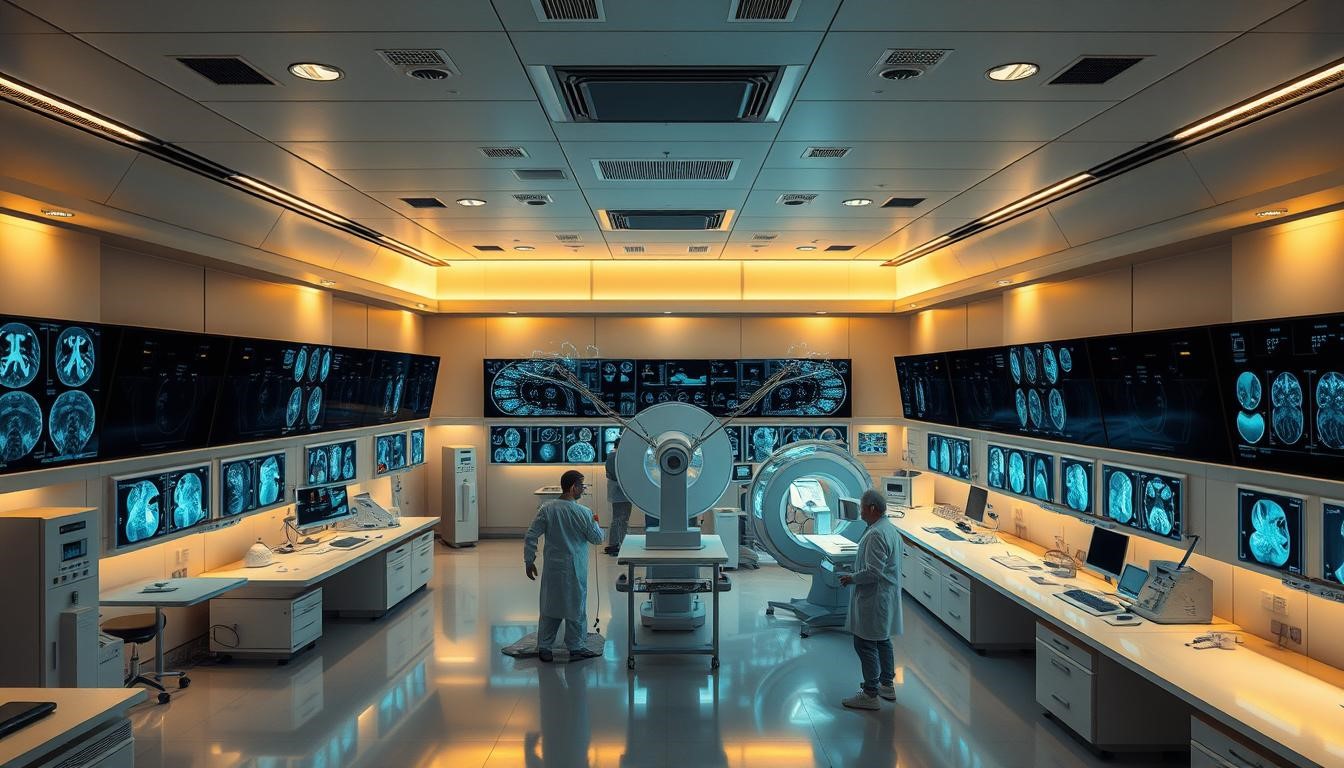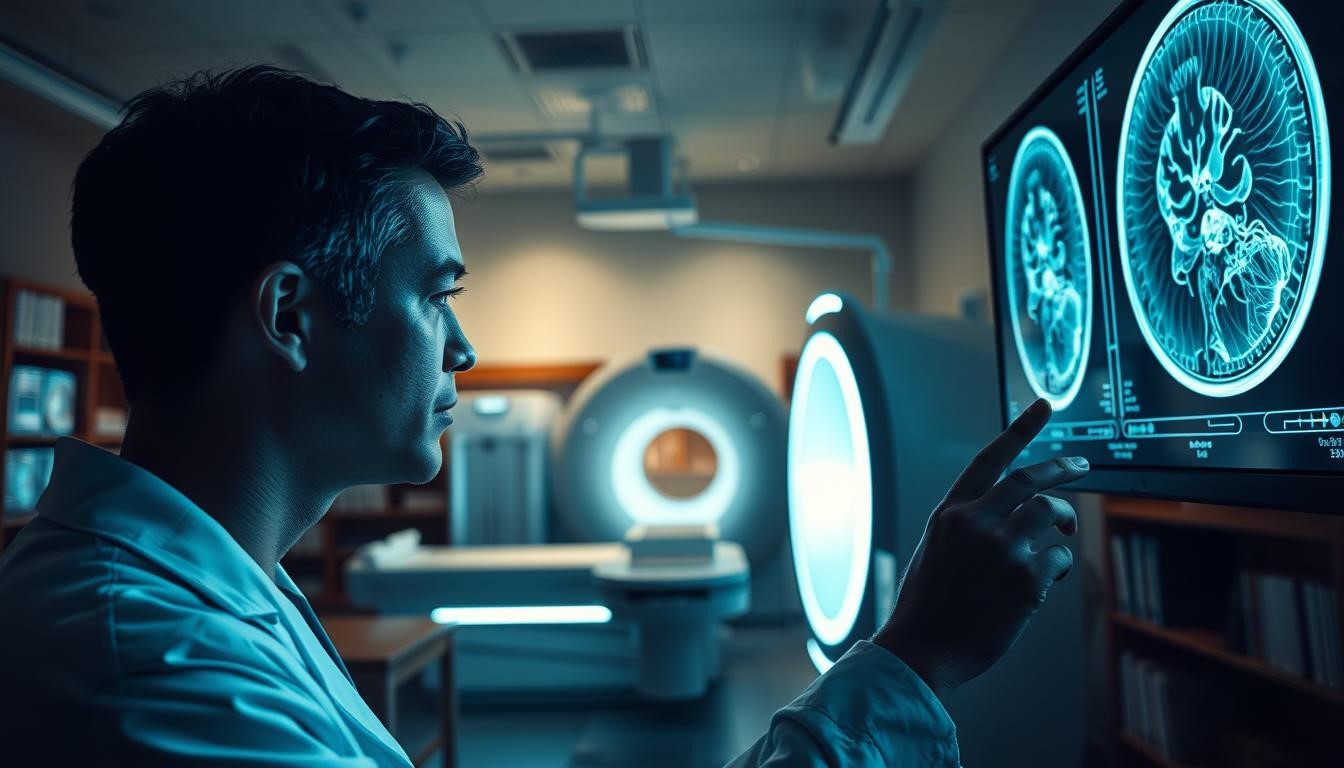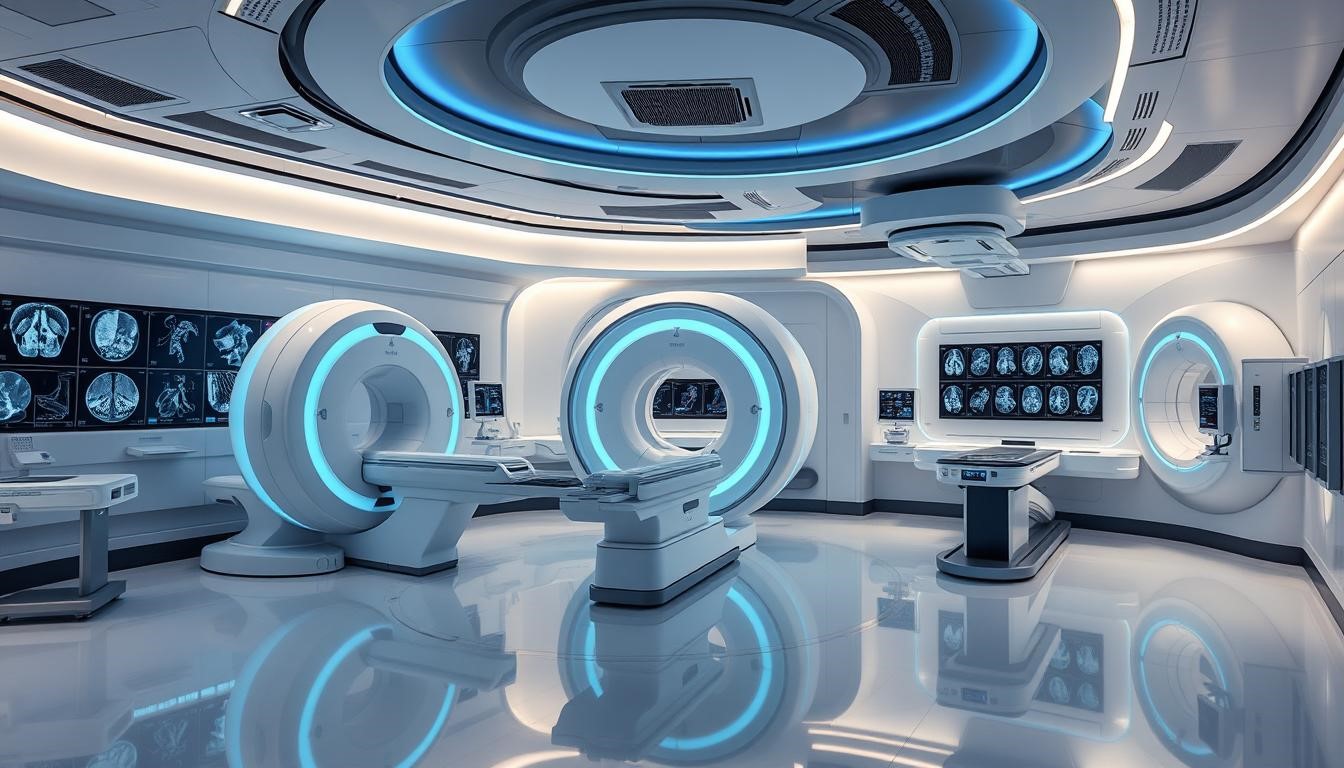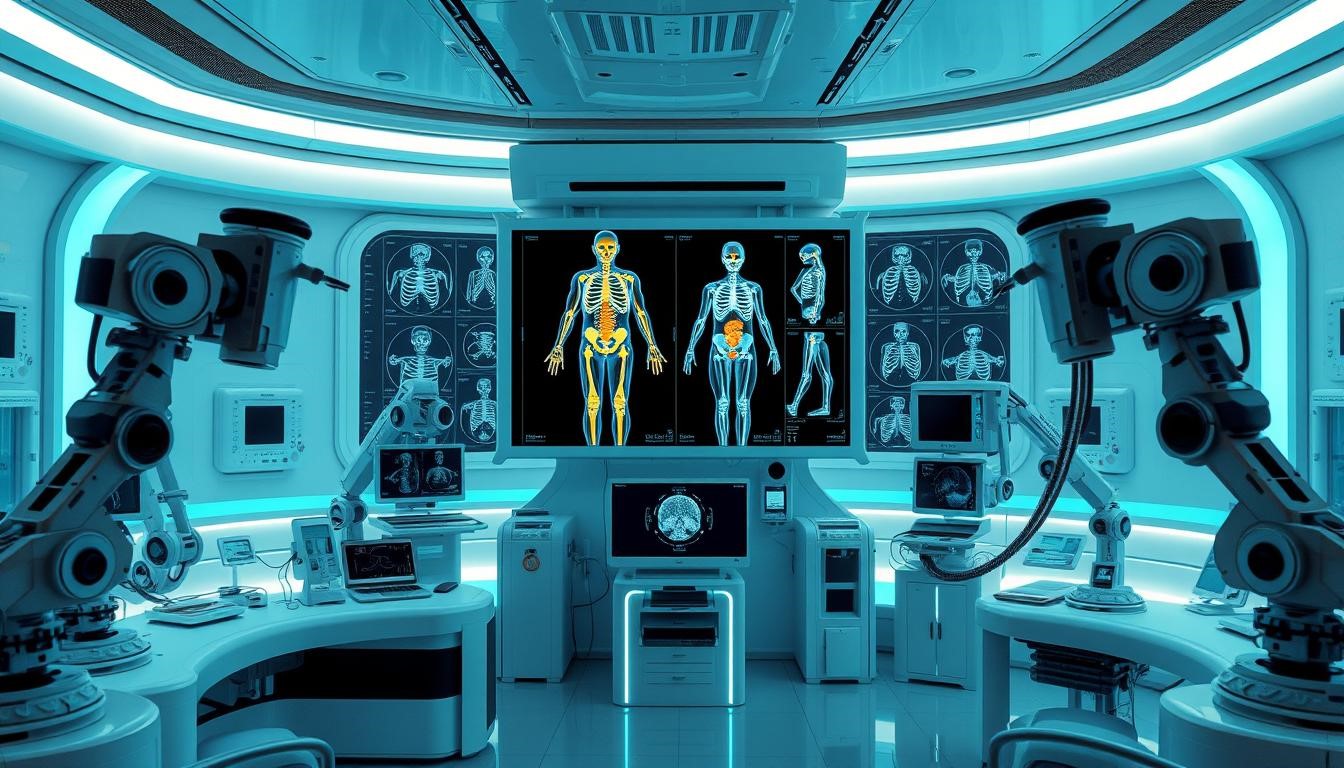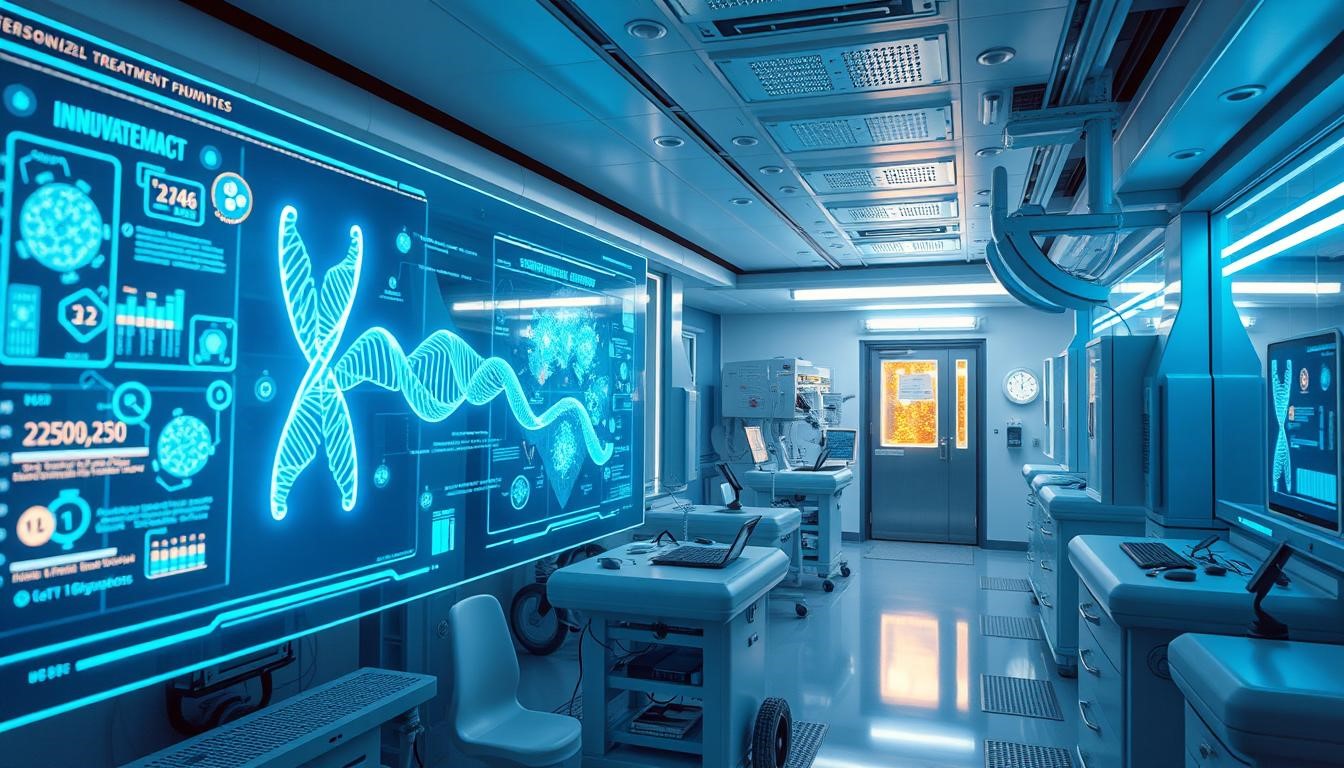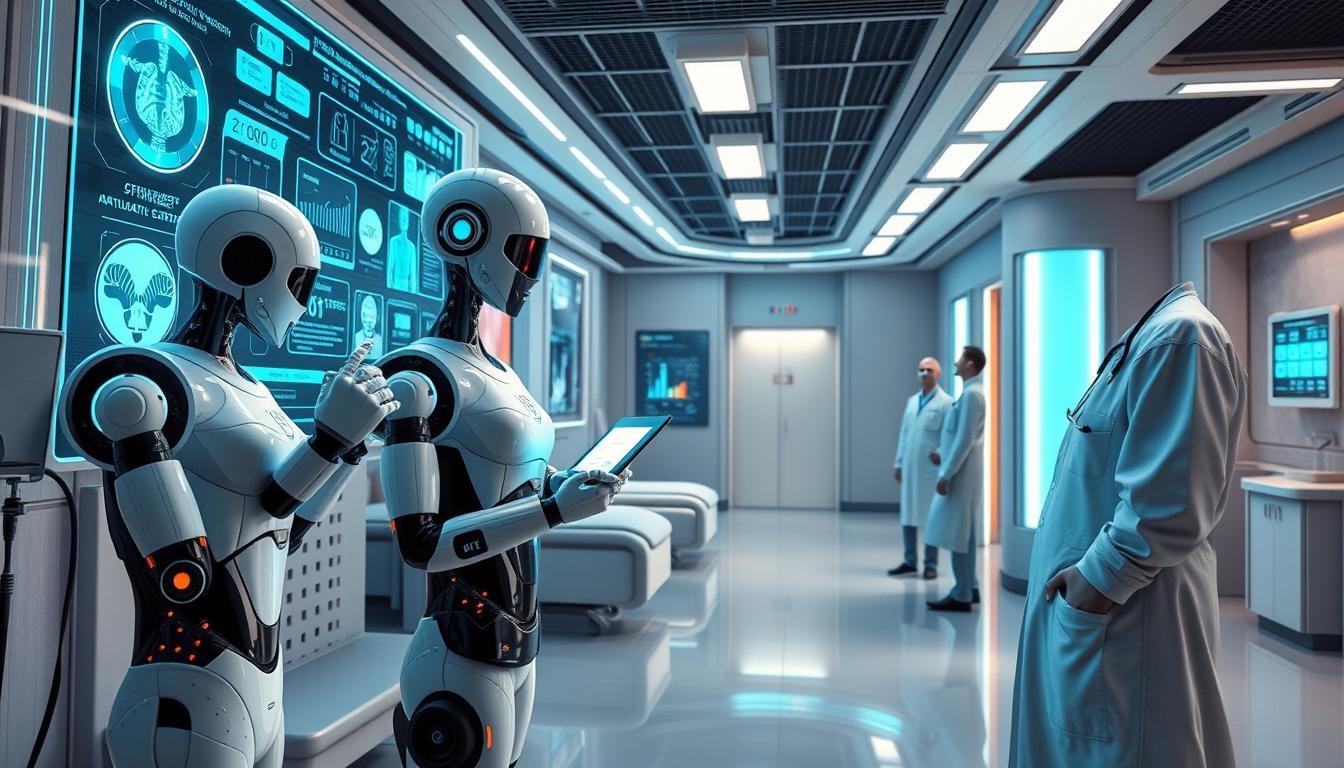The integration of Artificial Intelligence into medical workflows is revolutionizing the field of radiology. By automating repetitive tasks, healthcare professionals can focus on more complex and high-value tasks, improving overall efficiency and patient care.
The use of AI in Radiology has the potential to significantly enhance diagnostic accuracy and reduce the workload of radiologists. As the volume of medical imaging data continues to grow, the role of AI in streamlining radiology workflows becomes increasingly important.
By leveraging Artificial Intelligence, radiology departments can improve productivity, reduce errors, and provide better patient outcomes. This article will explore the ways in which AI is transforming radiology, making it an exciting time for healthcare professionals and patients alike.
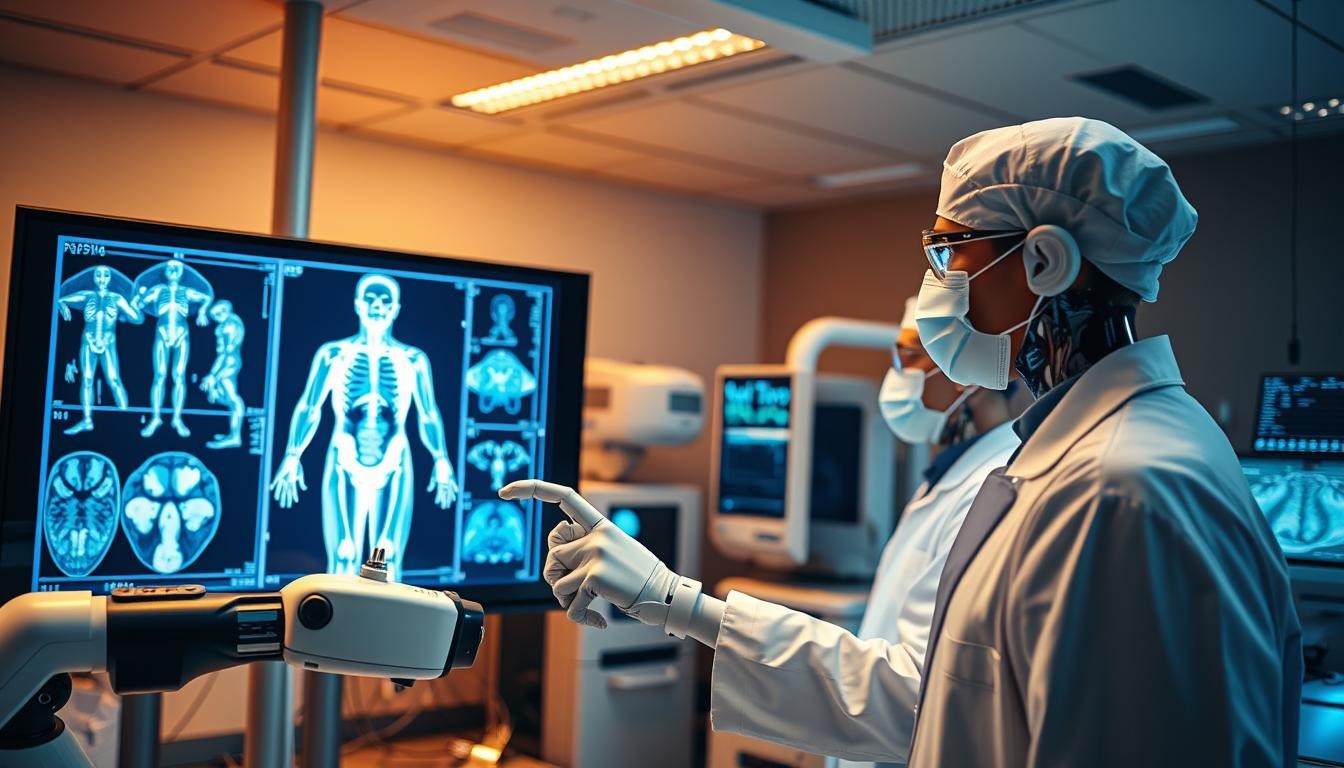
The Current State of Radiology Workflows
Canadian radiology departments are under increasing pressure to optimize their workflows amidst growing demands for diagnostic imaging. The integration of advanced healthcare technology is crucial in addressing the current inefficiencies.
Radiology workflows involve multiple steps, from image acquisition to reporting, and are often hampered by manual processes that are time-consuming and prone to errors. The need for automation in healthcare is becoming increasingly evident as it can significantly reduce the workload on healthcare professionals.
Common Challenges in Canadian Radiology Departments
Canadian radiology departments face several challenges, including high volumes of imaging requests, complex case loads, and the need for rapid turnaround times. These challenges are compounded by staffing shortages and the lack of standardized workflows.
Key challenges include: lengthy image interpretation times, inefficient reporting processes, and the lack of integration between different healthcare information systems.
The Burden of Repetitive Tasks on Healthcare Professionals
Repetitive tasks, such as image sorting and data entry, consume a significant amount of time for radiologists and other healthcare professionals. This not only leads to fatigue but also increases the likelihood of errors.
By automating these tasks, healthcare professionals can focus more on diagnostic accuracy and patient care, ultimately improving the overall quality of service.
AI in Radiology: A Transformative Technology
The integration of AI in radiology is revolutionizing the field of medical imaging. By leveraging advanced algorithms and machine learning techniques, AI is enhancing diagnostic accuracy and streamlining radiology workflows.
Machine Learning vs. Deep Learning in Medical Imaging
Machine learning and deep learning are both crucial components of AI in radiology. Machine learning involves training algorithms on data to improve performance on specific tasks. Deep learning, a subset of machine learning, uses neural networks to analyze complex data sets.

Supervised Learning Applications
Supervised learning is used in radiology for tasks like image classification and object detection. It relies on labeled data to train models that can accurately identify abnormalities in medical images.
Unsupervised Learning Applications
Unsupervised learning, on the other hand, is used for tasks like image segmentation and anomaly detection. It helps in identifying patterns in data without prior labeling.
Evolution of AI Applications in Canadian Healthcare
The use of AI in Canadian healthcare is rapidly evolving. From initial pilot projects to widespread adoption, AI is being integrated into various aspects of healthcare delivery, including radiology.
Canadian healthcare institutions are exploring AI solutions to improve patient outcomes and operational efficiency. The future of AI in radiology looks promising, with potential applications in diagnostic support and workflow optimization.
Repetitive Tasks Suitable for AI Automation
AI technology is revolutionizing the field of radiology by automating tasks that are repetitive, time-consuming, and prone to human error. This transformation is crucial in medical imaging, where the accuracy and efficiency of radiology tasks directly impact patient care.
The automation of repetitive tasks in radiology not only enhances productivity but also allows healthcare professionals to focus on more complex tasks that require their expertise.
Image Sorting and Prioritization
One of the key areas where AI can make a significant impact is in image sorting and prioritization. AI algorithms can quickly sort through large volumes of images, identifying and prioritizing those that require immediate attention. This capability is particularly valuable in emergency settings where timely diagnosis is critical.
Measurement and Quantification Tasks
AI can also automate measurement and quantification tasks in radiology, such as calculating tumor sizes or assessing the volume of certain anatomical structures. These tasks, while essential, are often repetitive and time-consuming, making them ideal candidates for automation.
Report Generation and Documentation
Furthermore, AI can assist in report generation and documentation, a task that is not only time-consuming but also requires a high level of accuracy. By automating this process, AI can help reduce the administrative burden on radiologists, allowing them to devote more time to interpreting images and making diagnoses.
AI Technologies Transforming Radiology Workflows
Advanced AI technologies are being increasingly adopted in radiology to streamline workflows and improve diagnostics. This transformation is largely driven by three key technologies: Computer Vision Algorithms for image analysis, Natural Language Processing for reporting, and Workflow Orchestration Systems.
Computer Vision Algorithms for Image Analysis
Computer Vision Algorithms are crucial for analyzing medical images. These algorithms can detect abnormalities, segment images, and quantify features with high precision. Some of the key applications include:
- Detection of tumors and lesions
- Segmentation of organs and structures
- Quantification of image features for diagnosis
Natural Language Processing for Reporting
Natural Language Processing (NLP) is being used to generate radiology reports. NLP can analyze and structure radiological findings, making it easier for radiologists to create comprehensive reports. The benefits include:
- Automated report generation
- Standardization of reporting formats
- Improved report accuracy
Workflow Orchestration Systems
Workflow Orchestration Systems integrate various AI tools to streamline radiology workflows. These systems can manage image analysis, coordinate reporting tasks, and ensure seamless integration with existing PACS and RIS systems. Key features include:
- Integration of multiple AI applications
- Automated task allocation
- Real-time monitoring of workflows
Implementation Considerations for Canadian Radiology Departments
Canadian radiology departments must address several implementation considerations to successfully adopt AI solutions. The effective integration of AI technology requires a comprehensive approach that encompasses technical infrastructure, integration with existing systems, and staff training.
Technical Infrastructure Requirements
The technical infrastructure is a critical component for the successful implementation of AI in radiology. This includes high-performance computing hardware and advanced data storage solutions capable of handling large volumes of medical imaging data. Ensuring that the infrastructure is scalable and secure is paramount.
Integration with Existing PACS and RIS
Seamless integration with existing Picture Archiving and Communication Systems (PACS) and Radiology Information Systems (RIS) is essential. This involves ensuring compatibility and interoperability between AI applications and current radiology workflows.
Data Security and Privacy Compliance
Maintaining data security and privacy compliance is crucial when integrating AI solutions. This involves adhering to Canadian healthcare regulations and standards for protecting patient information.
Interoperability Challenges
Addressing interoperability challenges is vital to ensure that AI systems can communicate effectively with existing radiology systems, facilitating smooth data exchange and workflow integration.
Staff Training and Change Management
Effective staff training is necessary to ensure that radiology professionals can efficiently utilize AI tools. This includes training on interpreting AI-generated results and managing the workflow changes brought about by AI adoption.
Benefits of Automating Radiology Tasks
Automating radiology tasks with AI brings numerous benefits to healthcare professionals and patients alike. By streamlining workflows, AI can significantly enhance the overall efficiency and quality of radiology services.
Improved Efficiency and Throughput
The automation of repetitive tasks in radiology leads to improved efficiency and throughput. AI can quickly process large volumes of imaging data, allowing radiologists to focus on more complex and high-value tasks. This results in faster turnaround times for imaging studies, enabling healthcare providers to make timely decisions and improving patient care.
Enhanced Diagnostic Accuracy
AI algorithms can be trained to detect subtle abnormalities in medical images, enhancing diagnostic accuracy. By reducing the likelihood of human error, AI-assisted diagnosis can lead to more accurate and reliable diagnoses. This, in turn, can improve patient outcomes by facilitating appropriate treatment plans.
Reduced Radiologist Burnout
By automating routine tasks, AI can help reduce radiologist burnout. The reduction in administrative and repetitive tasks allows radiologists to concentrate on more challenging cases, improving job satisfaction and reducing the risk of burnout. This can lead to a more sustainable and effective radiology workforce.
AI Adoption in Canadian Radiology Practices
The adoption of AI in Canadian radiology practices is transforming the healthcare landscape. As AI technologies continue to evolve, they are being increasingly integrated into radiology departments across the country.
This integration is driven by the need to improve efficiency, enhance diagnostic accuracy, and reduce the burden on healthcare professionals. AI is being used in various aspects of radiology, from image analysis to report generation.
Current Implementation Examples Across Provinces
Several Canadian provinces are at the forefront of AI adoption in radiology. For example, Ontario and British Columbia have implemented AI-powered image analysis tools to help radiologists identify abnormalities more accurately.
- Ontario: AI-assisted image sorting and prioritization
- British Columbia: AI-enhanced diagnostic support for radiologists
- Alberta: AI-based workflow orchestration systems
Regulatory Considerations Under Canadian Healthcare Framework
The adoption of AI in radiology is subject to regulatory oversight under the Canadian healthcare framework. Health Canada plays a crucial role in approving AI-based medical devices.
Regulatory considerations include ensuring the safety and efficacy of AI algorithms, as well as compliance with privacy regulations such as PIPEDA (Personal Information Protection and Electronic Documents Act).
Funding and Support for AI Integration
Various initiatives have been launched to support the integration of AI in Canadian healthcare, including radiology. The Canadian Institutes of Health Research (CIHR) and NSERC (Natural Sciences and Engineering Research Council) provide funding for AI research and development.
Additionally, organizations such as the Canadian Association of Radiologists offer guidance and support for radiology departments adopting AI technologies.
Conclusion: The Future of AI-Powered Radiology Workflows
The integration of AI in radiology is transforming the landscape of healthcare delivery. By automating repetitive tasks, AI is enhancing the efficiency and accuracy of radiology workflows, allowing healthcare professionals to focus on more complex and high-value tasks.
As the Future of AI in Radiology continues to evolve, we can expect to see significant advancements in AI-Powered Workflows. This will likely involve the development of more sophisticated machine learning algorithms and the increased adoption of AI technologies in radiology departments across Canada.
The potential benefits of AI-powered radiology workflows are substantial, including improved diagnostic accuracy, reduced radiologist burnout, and enhanced patient care. As the Canadian healthcare system continues to adopt and integrate AI technologies, we can expect to see meaningful improvements in healthcare delivery and outcomes.
FAQ
What are the main benefits of automating repetitive tasks in radiology with AI?
Automating repetitive tasks in radiology with AI can lead to improved efficiency, enhanced diagnostic accuracy, and reduced burnout among radiologists, ultimately improving healthcare delivery.
How does AI technology like computer vision and natural language processing transform radiology workflows?
AI technologies such as computer vision for image analysis and natural language processing for reporting can significantly enhance the efficiency and accuracy of radiology workflows, allowing healthcare professionals to focus on more complex tasks.
What are the key considerations for implementing AI in Canadian radiology departments?
Implementing AI in Canadian radiology departments requires careful consideration of technical infrastructure requirements, integration with existing Picture Archiving and Communication Systems (PACS) and Radiology Information Systems (RIS), staff training, and data security and privacy compliance.
What repetitive tasks in radiology are suitable for AI automation?
Tasks such as image sorting and prioritization, measurement and quantification, and report generation and documentation are suitable for AI automation, as they are often time-consuming and prone to human error.
What is the role of machine learning and deep learning in medical imaging?
Machine learning and deep learning are crucial in medical imaging, enabling AI systems to learn from data, improve diagnostic accuracy, and automate tasks, with applications in image analysis, detection, and classification.
How can AI help reduce radiologist burnout?
AI can help reduce radiologist burnout by automating repetitive and time-consuming tasks, allowing radiologists to focus on more complex and high-value tasks, and improving their overall work-life balance.
What are the regulatory considerations for AI integration in Canadian healthcare?
Regulatory considerations for AI integration in Canadian healthcare include compliance with data security and privacy regulations, such as the Personal Information Protection and Electronic Documents Act (PIPEDA), and adherence to guidelines set by Health Canada and other relevant authorities.


